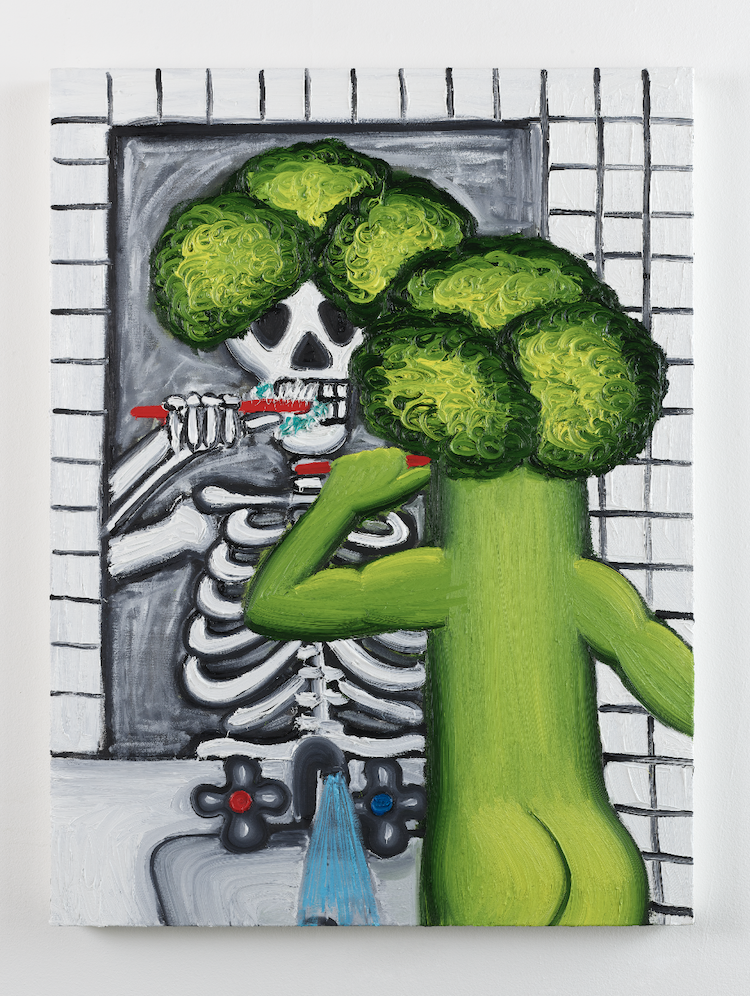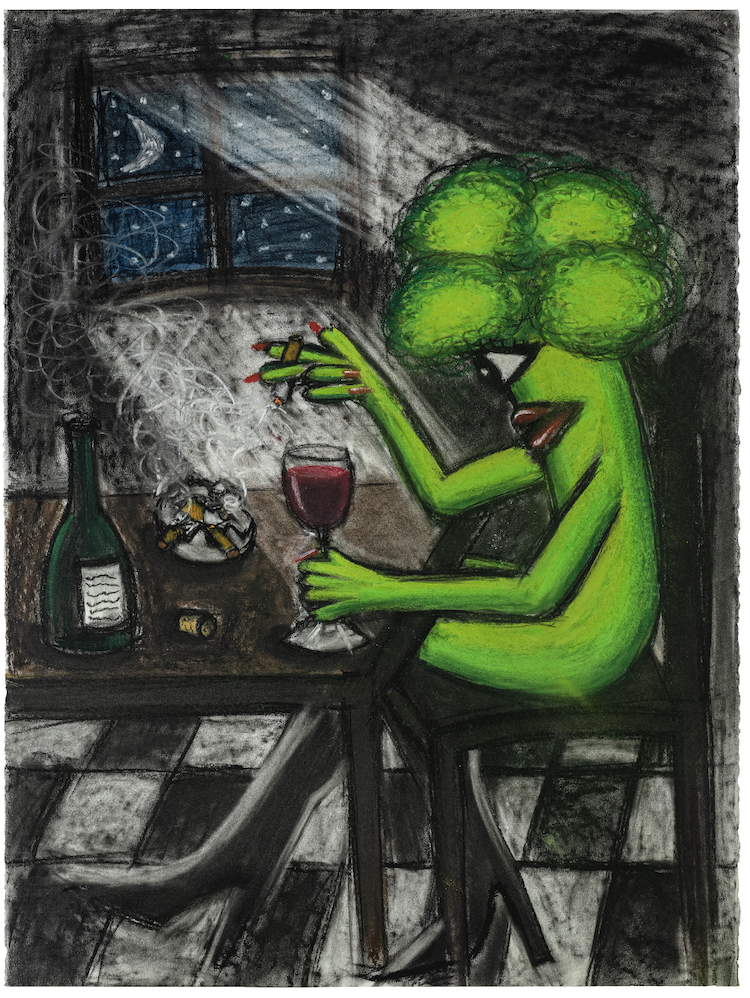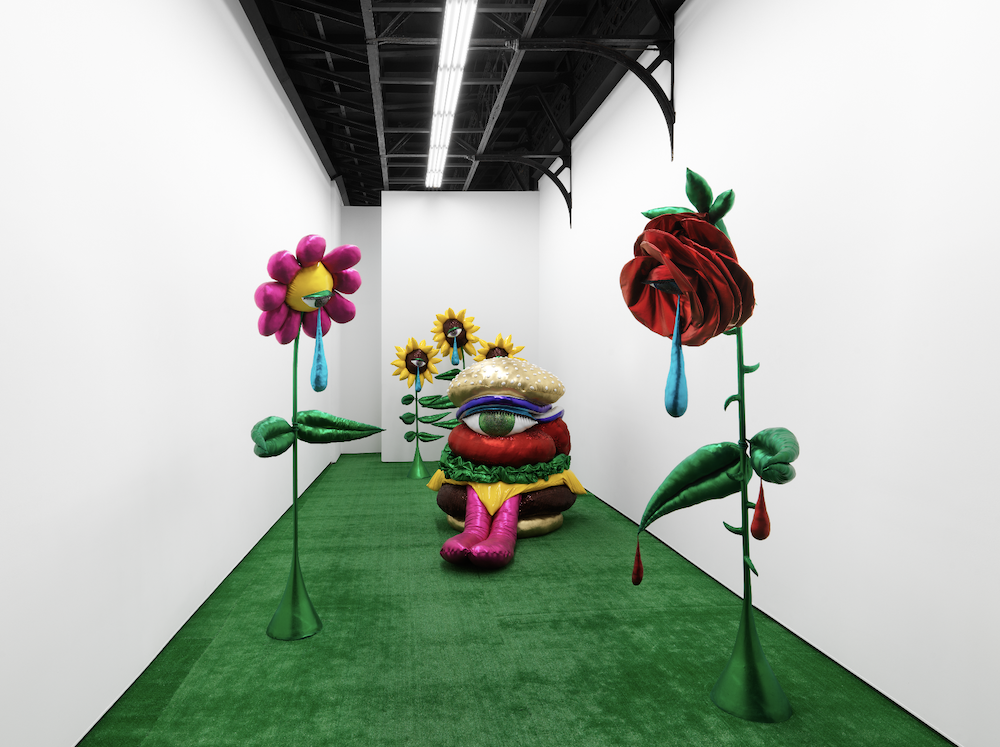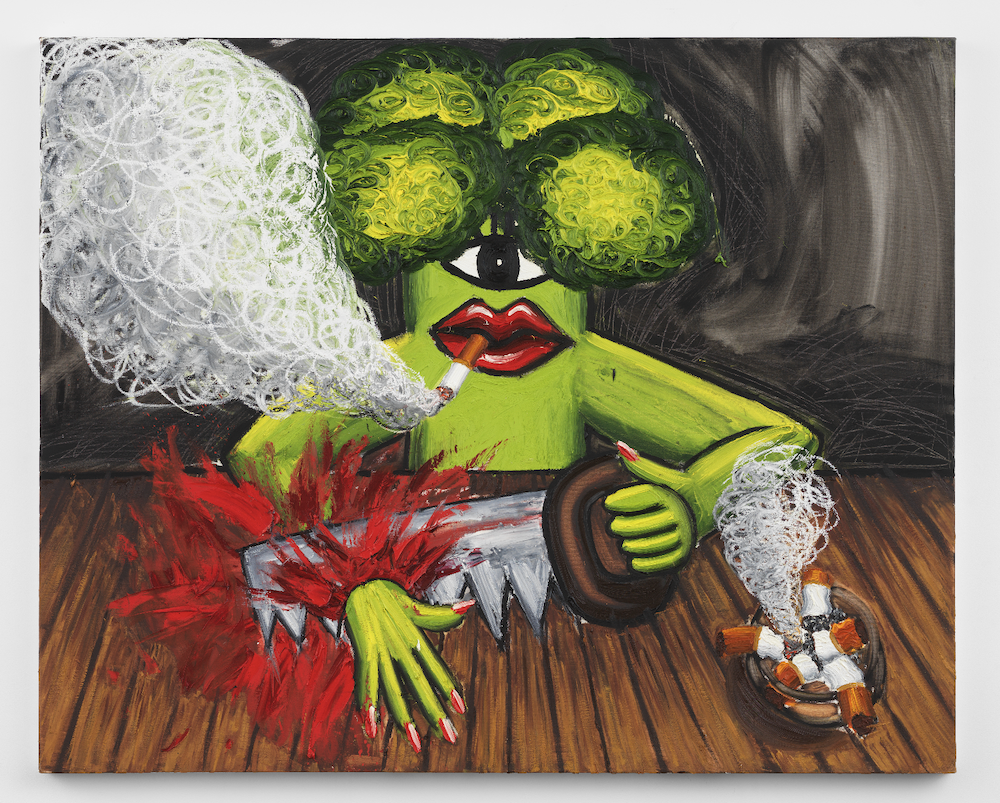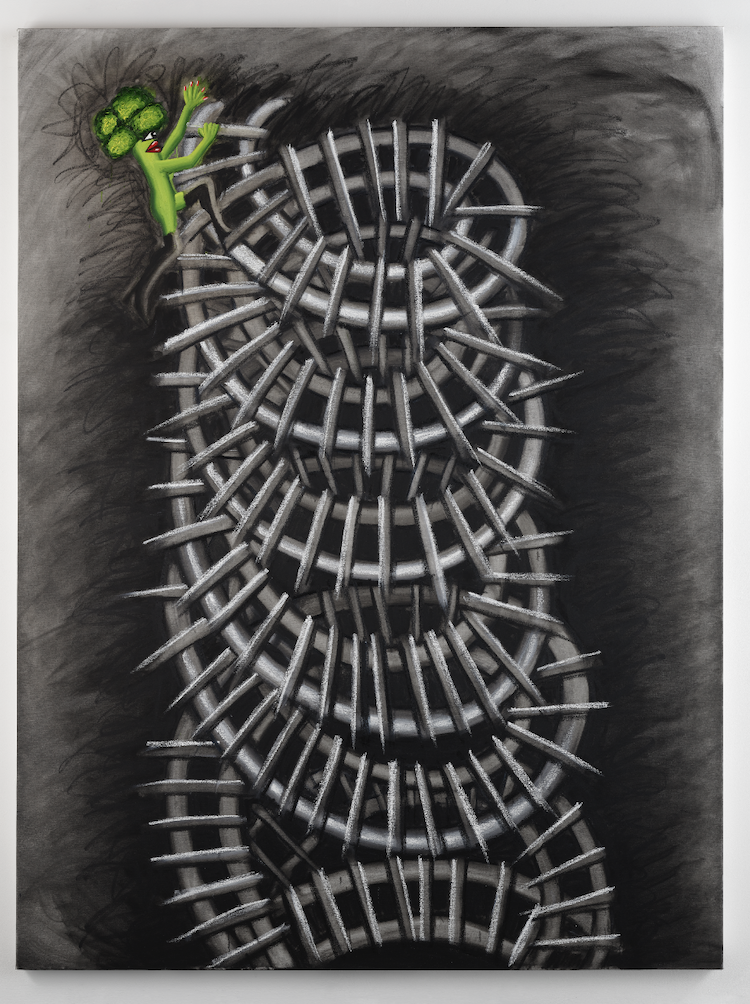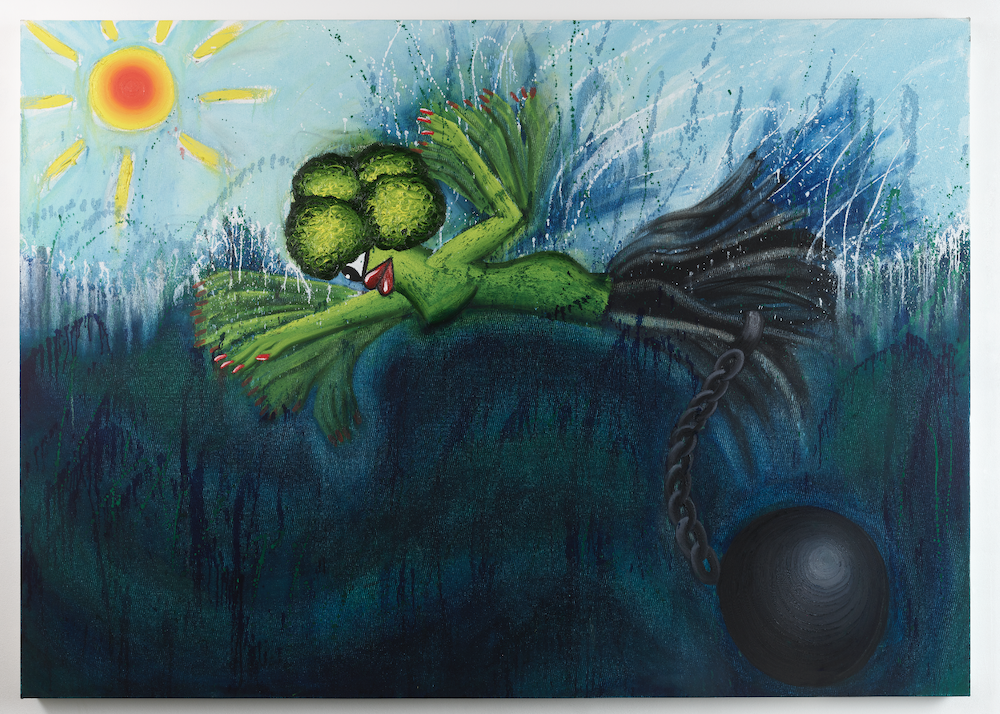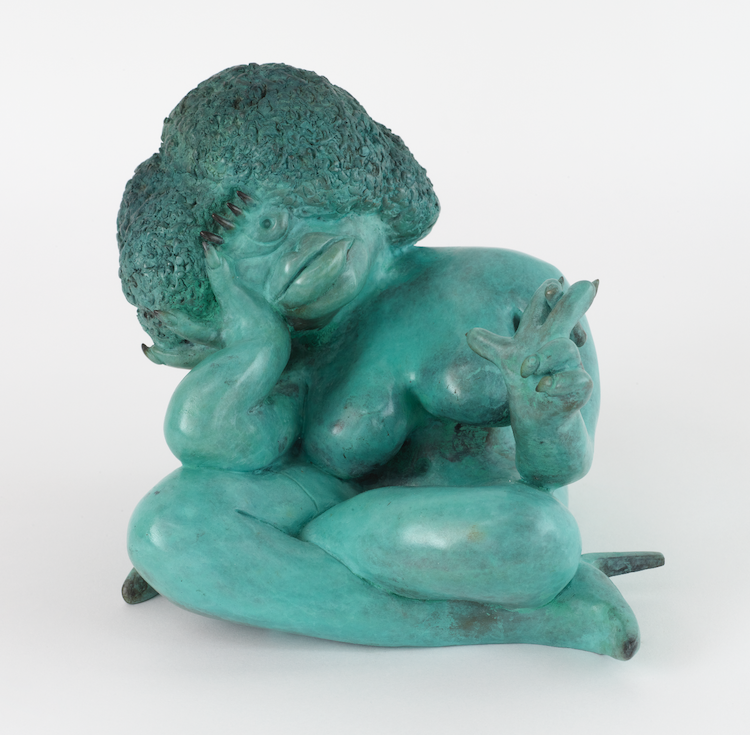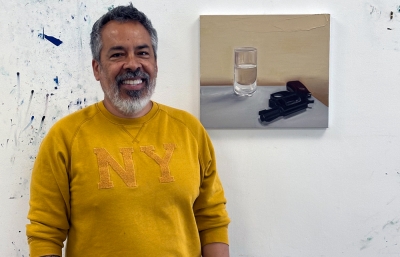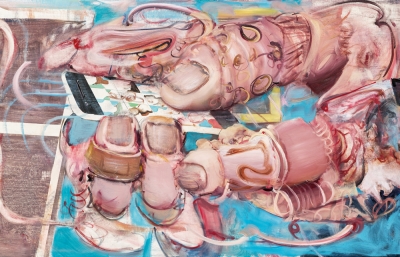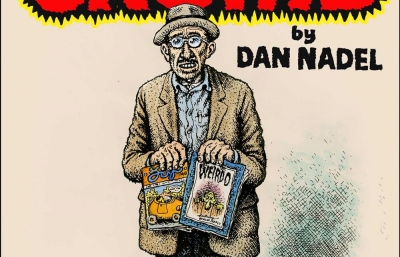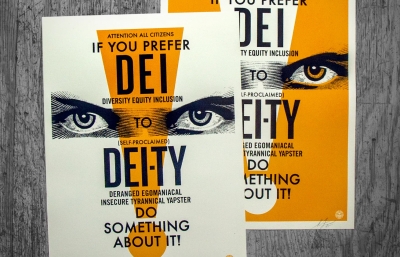Forgive the ancient Saturday Night Live reference above, “Choppin’ Broccoli,” but Hein Koh’s broccoli woman might approve—she’d also chop you first. The pandemic cornered Koh in a way that proved artistically fruitful. Previously known for her cheeky sculptures and lush installations, she began focusing on painting the lived experience of this vegetal femme fatale. Hein Koh and her broccoli woman ride trials and tribulations together, tossing each other’s salad with a saucy, complex zest. Hein’s work and her words are delightful yet poignant, striking a critical emotional balance: “I do love to find humor in everything, even the darkness.”
Kristin Farr: Who is your protagonist? How does she identify and where did she come from? Your paintings of her are powerful.
Hein Koh: She's an anthropomorphic broccoli who wears thigh-high, black leather boots, red lipstick and red nails. She smokes a lot. Originally, I had made a smoking broccoli sculpture in 2019, but when I started painting again during the pandemic, I wanted to go deeper into her character and tell her stories. Sometimes I paint a carrot woman too, but lately I've been focusing more on the broccoli woman. I've been drawn to her form—she has cool hair that is fun to paint—and her role as the quintessential healthy vegetable.
I also realized that she is an "other,” being green and different. As an Asian-American female artist weirdo, I'm so used to being a minority that I don't think too much about it on a daily basis. However, the way I navigate the world is unique to my identity, and that comes through my vegetal women too. They're relatable, though—I don't want them to appeal just to a small niche audience, I want their experiences to be collective and universal. 
What is the broccoli woman’s inner landscape like?
She's very human. Pensive, anxious, depressed, but also bold and badass.
What does she smell like? Do you imagine the way she might talk or what kind of music she listens to?
I imagine she would wear a fragrant perfume, especially to cover up the broccoli smell. I think of her as a character without an audible voice, but she is very expressive through her actions. She is into ’90’s–early 2000’s hip hop, as well as punk rock and post-punk. Think Missy Elliot and Fugazi.
I love Stairway to Heaven. It has your signature balance of humor and darkness.
It's a metaphor for striving, trying to succeed or be good. Depending on the viewer's level of optimism, the broccoli woman is either just falling short or almost there. I called it Stairway to Heaven because the title is so obvious and cliché, which I find funny. For most people, or at least older generations familiar with Led Zeppelin, the iconic tune just pops into your mind every time you hear that phrase. It's so annoying, which I also thought was funny, as well as powerful.
What narratives have you been exploring recently?
I've introduced a new character into my work whom I call "The Shadow.” It allows the broccoli woman to relate to another, but the shadow can also be her own shadow. I like it to be open. In Jungian psychology, the shadow is the darker part of ourselves that we don't like and find hard to accept. It takes work to accept our shadows and be more self-aware. My work is becoming more emotional—I'm trying to dig deep.
Which emotions do you most often explore in the work?
A lot of negative ones. My current work was birthed during the pandemic, so a lot of it is about anxiety, depression and loneliness. Now that the broccoli woman is interacting with a shadow character, I am exploring the negative emotions of relationships. I am generally a happy person—at least I was before the pandemic—but I use my work to work through difficult emotions.
Is there something you miss most about pre-pandemic life?
Yes. I miss life being lighter and more fun. I was much lighter, more fun and happier. I can enter that space occasionally, like when I socialize, but overall, life is just heavier and fraught with anxiety. I'm looking forward to the time when things are mostly light and fun again. Then again, maybe I'm just experiencing middle age and things will only get worse.
Tell me about the symbolism of cigarettes in your work.
I don't smoke but, in my work, smoking represents a moment to reflect and meditate—take time out for one's self—which I need to do more often. Also, when the broccoli woman experiences moments of duress, smoking represents her ability to chill and think “it's all good.” Despite being pushed to the edge, she's under control. 
What are the most remarkable changes in your work over the last five years?
Wow, my work has really changed a lot over the past five years. In 2017, I was making anthropomorphic, glittery, shiny metallic soft sculptures of hearts, stars, rainbows, food and flowers. My first solo show in NYC, which was my breakout show at Marvin Gardens, was comprised of a giant cheeseburger, giant ice cream cone and nine-foot-tall flowers. Then, once the pandemic hit, I took a break from my studio for two months. When I returned, I realized I did not want to make soft sculptures anymore. I felt really sick of the labor and I also felt I couldn't make such colorful and happy work during such a depressing time. So I reconnected with painting and drawing, which allowed me to express the dark emotions I was feeling, which is the work I am continuing to make today. I am also easing my way back into sculpture, but working with fabricators to make bronzes. I don't think I want to make any laborious sculptures on my own again. I always have a lot of ideas, so I'd rather spend my time realizing more ideas than laboring over far fewer ideas, whether it's through painting or sculpture.
Tell me about your recent museum shows.
I had a show up at the Savannah College of Art and Design Museum earlier this year. It was my first museum solo, and I created four installations in giant windows, which they call jewel boxes. I used the flowers from my Marvin Gardens show and also painted backdrops that were printed as vinyl wallpaper. It was great to give that work a second life in a museum setting, and combine it with something new. I was also in a group show at the National Academy of Arts Museum in Vienna.
Do you plan your work through sketches? Does the broccoli woman direct your hand?
I'm always thinking of ideas, which I sketch in my 5 x 7-inch sketchbook in pencil. Some of those turn into bigger pastel and charcoal drawings, and then I pick some to turn into paintings. I don't think of the broccoli woman as directing my hand, but when I am feeling connected to my work, I do feel there is some kind of force directing me. The broccoli woman acts as a vehicle to channel the force and emotions.
Hein Koh’s upcoming solo show at Anton Kern Gallery will open in May, 2022.

